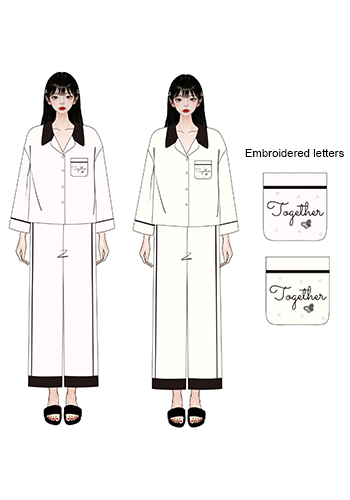Service is our first priority to customers

More than 10 years production experience
Mature Processes and Systems: With more than ten years of production experience, the company has likely refined its manufacturing processes, supply chain management, and quality control systems. This maturity helps ensure consistent product quality and efficient operations.
Skilled Workforce: A decade of production experience often means that the company has built a team of experienced employees who are proficient in their roles. This includes skilled technicians, engineers, and managers who have a deep understanding of the production process and can handle complex tasks efficiently.
Proven Track Record: Having over ten years of experience in production suggests that the company has a proven track record of delivering products on time and meeting customer expectations. This reliability is crucial for building long-term relationships with clients and partners.

With own R&D department
We had our own Research and Development (R&D) that has dedicated resources and personnel focused on innovation, improvement, and the creation of new products, services, or processes. This department is crucial for driving long-term success and maintaining a competitive edge in the market. Below are key aspects and benefits of having an in-house R&D department:
1. Driving Innovation
The primary role of an R&D department is to fuel innovation. By exploring new technologies, ideas, and solutions, the company can develop groundbreaking products or services that meet emerging customer needs and market demands. This continuous drive for innovation helps companies stay ahead of competitors and adapt to changing market conditions.
2. Enhancing Competitiveness
Investing in R&D allows companies to differentiate themselves through unique value propositions and proprietary technologies. This competitive edge is essential for attracting customers, increasing market share, and driving sustainable growth. Companies with strong R&D capabilities are often seen as industry leaders and pioneers.

Provide the Highest Standard and Quality

Competitive Price
1. Cost Optimization
Streamline Operations: Identify and eliminate inefficiencies in your processes.
Lean Manufacturing: Adopt lean principles to reduce waste and improve productivity.
Automation: Use technology to automate repetitive tasks and reduce labor costs.
2. Economies of Scale
Bulk Purchasing: Negotiate better rates by buying raw materials or components in bulk.
Increase Production Volume: Higher output can reduce per-unit costs.
3. Supplier Relationships
Negotiate Better Deals: Build strong relationships with suppliers to secure discounts or favorable terms.
Diversify Suppliers: Avoid dependency on a single supplier to ensure competitive pricing and reliability.
4. Value Engineering
Optimize Design: Simplify product designs to reduce material and production costs without compromising quality.
Substitute Materials: Use cost-effective alternatives that meet quality standards.
5. Efficient Supply Chain Management
Reduce Logistics Costs: Optimize transportation and distribution networks.
Inventory Management: Implement just-in-time (JIT) inventory systems to minimize holding costs.
6. Technology and Innovation
Invest in R&D: Develop innovative solutions that reduce production costs.
Adopt Advanced Tools: Use software for better demand forecasting and resource planning.

Small MOQ available
1. Benefits of Small MOQs
Attract Diverse Customers: Appeal to small businesses, startups, and individual entrepreneurs.
Reduce Risk for Buyers: Allow customers to test products without committing to large orders.
2. Strategies to Offer Small MOQs
Flexible Production Systems:
Use modular or customizable production processes to handle smaller batches efficiently.
Invest in technologies like 3D printing or CNC machining for low-volume production.
Inventory Management:
Maintain a stock of commonly ordered items to fulfill small orders quickly.
Use just-in-time (JIT) manufacturing to reduce inventory costs.
Supplier Collaboration:
Work with suppliers who support small batch orders or offer flexible terms.
Streamline Operations:
Optimize workflows to reduce setup costs and make small orders economically viable.
3. Pricing Strategies for Small MOQs
Tiered Pricing:
Offer discounts for larger orders while keeping small MOQ prices reasonable.
Bundle Products:
Create product bundles to increase the value of small orders.
Transparent Costs:
Clearly communicate any additional fees (e.g., setup or customization charges) for small orders.
4. Marketing Small MOQs
Highlight Flexibility:
Emphasize your ability to cater to small businesses, startups, and custom orders.
Showcase Success Stories:
Share case studies or testimonials from customers who benefited from small MOQs.
Target Niche Markets:
Focus on industries or customer segments that frequently require small orders (e.g., boutique retailers, craft businesses).
Leverage Digital Platforms:
Use e-commerce platforms, social media, and online marketplaces to reach customers looking for small MOQs.

Fast shipment
1. Optimize Your Supply Chain
Efficient Inventory Management:
Use real-time tracking systems to monitor stock levels and avoid delays.
Implement just-in-time (JIT) inventory to reduce holding costs and speed up order fulfillment.
Strategic Warehousing:
Position warehouses closer to key markets to reduce transit times.
Use third-party logistics (3PL) providers for better distribution coverage.
2. Streamline Order Processing
Automate Workflows:
Use order management systems (OMS) to process orders quickly and accurately.
Pre-Pack Popular Items:
Prepare ready-to-ship packages for high-demand products.
Clear Communication:
Ensure seamless coordination between sales, inventory, and shipping teams.
3. Partner with Reliable Carriers
Choose Fast Shipping Options:
Partner with carriers that offer expedited shipping services (e.g., FedEx, DHL, UPS).
Negotiate Rates:
Secure better shipping rates by negotiating with carriers based on your shipment volume.
Multiple Carrier Options:
Offer customers a choice of shipping providers to balance speed and cost.

OEM/ODM available
1. Benefits of Offering OEM/ODM
Expand Customer Base: Attract businesses looking for custom manufacturing solutions.
Increase Revenue Streams: Generate income from both manufacturing and design services.
Build Long-Term Partnerships: Foster strong relationships with brands that rely on your expertise.
2. Key Strategies for Success
Showcase Your Capabilities:
Highlight your expertise in design, engineering, and manufacturing.
Provide examples of past OEM/ODM projects to demonstrate your experience.
Flexible Customization:
Offer a wide range of customization options (e.g., materials, colors, packaging).
Quality Assurance:
Ensure all OEM/ODM products meet high-quality standards and comply with regulations.
Scalability:
Accommodate both small and large orders to cater to diverse client needs.
3. Marketing Your OEM/ODM Services
Create a Dedicated Page:
Develop a section on your website detailing your OEM/ODM capabilities, process, and benefits.
Leverage Case Studies:
Share success stories and testimonials from satisfied OEM/ODM clients.
Attend Trade Shows:
Showcase your OEM/ODM services at industry events to connect with potential clients.
Use Digital Marketing:
Run targeted ads and content campaigns to reach businesses seeking OEM/ODM solutions.
4. Streamline the OEM/ODM Process
Initial Consultation:
Understand the client’s needs, target market, and design requirements.
Prototyping:
Create samples or prototypes for client approval before mass production.
Efficient Production:
Use advanced manufacturing technologies to ensure precision and scalability.
Logistics Support:
Offer packaging, labeling, and shipping services to simplify the process for clients.

Great customer service
1. Team were trained
Empathy and Patience: Train staff to listen actively and respond with empathy.
Product Knowledge: Ensure your team is well-versed in your products or services to provide accurate information.
Problem-Solving Skills: Equip your team with the tools and authority to resolve issues quickly.
2. Be Responsive
Quick Response Times: Aim to respond to inquiries and complaints within minutes or hours, not days.
Multi-Channel Support: Offer support through various channels (phone, email, live chat, social media).
24/7 Availability: Consider providing round-the-clock support, especially for global customers.
3. Go the Extra Mile
Exceed Expectations: Surprise customers with small gestures like discounts, free upgrades, or handwritten thank-you notes.
Proactive Support: Anticipate customer needs and address potential issues before they arise.
Follow-Up: Check in with customers after a purchase or resolution to ensure satisfaction.
4. Handle Complaints Effectively
Stay Calm and Professional: Listen without interrupting and acknowledge the customer’s concerns.
Apologize Sincerely: Offer a genuine apology, even if the issue wasn’t your fault.
Resolve Quickly: Provide a solution promptly and follow up to ensure the problem is fully resolved.
本页简介
内容1
内容2
